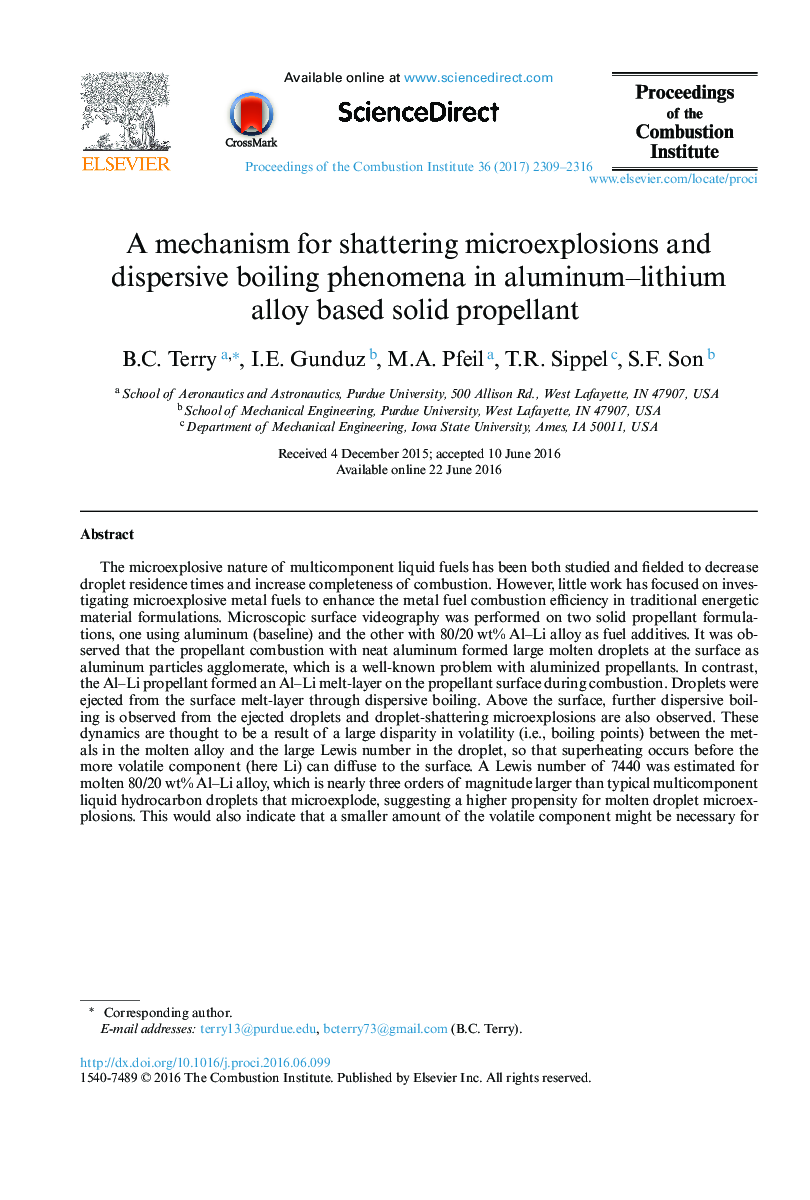| کد مقاله | کد نشریه | سال انتشار | مقاله انگلیسی | نسخه تمام متن |
|---|---|---|---|---|
| 6478313 | 1427916 | 2017 | 8 صفحه PDF | دانلود رایگان |
The microexplosive nature of multicomponent liquid fuels has been both studied and fielded to decrease droplet residence times and increase completeness of combustion. However, little work has focused on investigating microexplosive metal fuels to enhance the metal fuel combustion efficiency in traditional energetic material formulations. Microscopic surface videography was performed on two solid propellant formulations, one using aluminum (baseline) and the other with 80/20 wt% Al–Li alloy as fuel additives. It was observed that the propellant combustion with neat aluminum formed large molten droplets at the surface as aluminum particles agglomerate, which is a well-known problem with aluminized propellants. In contrast, the Al–Li propellant formed an Al–Li melt-layer on the propellant surface during combustion. Droplets were ejected from the surface melt-layer through dispersive boiling. Above the surface, further dispersive boiling is observed from the ejected droplets and droplet-shattering microexplosions are also observed. These dynamics are thought to be a result of a large disparity in volatility (i.e., boiling points) between the metals in the molten alloy and the large Lewis number in the droplet, so that superheating occurs before the more volatile component (here Li) can diffuse to the surface. A Lewis number of 7440 was estimated for molten 80/20 wt% Al–Li alloy, which is nearly three orders of magnitude larger than typical multicomponent liquid hydrocarbon droplets that microexplode, suggesting a higher propensity for molten droplet microexplosions. This would also indicate that a smaller amount of the volatile component might be necessary for microexplosions and dispersive boiling than observed for liquid hydrocarbon fuels. These dynamics are important for metal fuel applications, because injectors cannot be used to decrease droplet size in a metallized energetic material formulation.
Journal: Proceedings of the Combustion Institute - Volume 36, Issue 2, 2017, Pages 2309–2316
